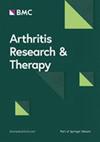Long-term follow-up of 109 children with juvenile idiopathic oligoarthritis after first intra-articular corticosteroid injection
IF 4.9
2区 医学
Q1 Medicine
引用次数: 0
Abstract
To evaluate long-term outcomes and prognostic factors in patients with juvenile idiopathic arthritis (JIA), presenting as oligoarthritis, who received IAC as the first treatment for their disease. We conducted retrospective study at the University Children’s Hospital Ljubljana, Slovenia, from January 2015 to May 2023 in children with JIA, clinically presenting as oligoarthritis receiving intra-articular corticosteroid injection (IAC) as the initial treatment. Patient and treatment data were collected, and the outcomes were categorized into three groups based on the later need for therapy: no therapy needed, only additional IAC needed and systemic therapy needed. The last group was further divided based on the requirement of bDMARD. Log-rank (Mantel-Cox) survival analyses compared different outcome groups. We included 109 patients with JIA, presenting as oligoarthritis (63% female), who were first treated with IAC. The mean age at IAC was 8.0 years, with a 4.3-year follow-up. Notably, 38.5% of patients did not require additional therapy post-IAC, whereas 15.5% required only additional IAC. Systemic therapy, mainly methotrexate (MTX), was necessary for 45.9% of patients, initiated in average 7.8 months post-IAC. Biologic therapy was initiated in 22% in average 2.2 years post-IAC. Number of injected joints correlated with the need for biologics. At the last follow-up, 88.9% had inactive disease. ANA positivity (P = 0.049, chi square 3.89) and HLA B27 antigen presence (P = 0.050, chi square 3.85) were associated with the need for systemic therapy. A subgroup of children older than 8 years, ANA and HLA B27 negative required significantly less systemic (25.8%) and biologic therapy (9.6%) compared to other patients (p = 0.050, chi square 3.77). Almost 40% of children with oligoarticular JIA requiring IAC did not progress to chronic disease. Younger age, ANA positivity, and HLA B27 presence were predictive factors for systemic therapy, while the number of injected joints predicted the future need for biologic therapy.109 名幼年特发性少关节炎患儿首次关节内注射皮质类固醇后的长期随访情况
为了评估幼年特发性关节炎(JIA)患者的长期疗效和预后因素,这些患者表现为少关节炎,接受了 IAC 作为其疾病的首次治疗。我们于 2015 年 1 月至 2023 年 5 月在斯洛文尼亚卢布尔雅那大学儿童医院开展了一项回顾性研究,研究对象是临床表现为少关节炎、接受关节内皮质类固醇注射(IAC)作为初始治疗的幼年特发性关节炎患儿。研究人员收集了患者和治疗数据,并根据后期治疗需求将结果分为三组:无需治疗组、仅需额外IAC组和需系统治疗组。最后一组根据是否需要使用 bDMARD 进一步划分。对数秩(Mantel-Cox)生存分析比较了不同结果组别。我们纳入了109名首次接受IAC治疗的JIA患者,他们均表现为少关节炎(女性占63%)。接受 IAC 治疗时的平均年龄为 8.0 岁,随访时间为 4.3 年。值得注意的是,38.5% 的患者在接受 IAC 治疗后无需再接受其他治疗,而 15.5% 的患者仅需再接受 IAC 治疗。45.9%的患者需要接受全身治疗,主要是甲氨蝶呤(MTX),平均在IAC后7.8个月开始。22%的患者在 IAC 后平均 2.2 年开始接受生物治疗。注射关节的数量与生物制剂的需求相关。在最后一次随访中,88.9%的患者病情未见好转。ANA 阳性(P = 0.049,秩方 3.89)和 HLA B27 抗原存在(P = 0.050,秩方 3.85)与是否需要系统治疗有关。与其他患者相比,年龄大于 8 岁、ANA 和 HLA B27 阴性的亚组患者所需的全身治疗(25.8%)和生物治疗(9.6%)显著减少(P = 0.050,卡方 3.77)。在需要接受 IAC 治疗的少关节型 JIA 患儿中,近 40% 的患儿没有发展为慢性疾病。年龄较小、ANA 阳性和 HLA B27 存在是全身治疗的预测因素,而注射关节的数量则预测了未来对生物治疗的需求。
本文章由计算机程序翻译,如有差异,请以英文原文为准。
求助全文
约1分钟内获得全文
求助全文
来源期刊

Arthritis Research & Therapy
RHEUMATOLOGY-
CiteScore
8.60
自引率
2.00%
发文量
261
审稿时长
14 weeks
期刊介绍:
Established in 1999, Arthritis Research and Therapy is an international, open access, peer-reviewed journal, publishing original articles in the area of musculoskeletal research and therapy as well as, reviews, commentaries and reports. A major focus of the journal is on the immunologic processes leading to inflammation, damage and repair as they relate to autoimmune rheumatic and musculoskeletal conditions, and which inform the translation of this knowledge into advances in clinical care. Original basic, translational and clinical research is considered for publication along with results of early and late phase therapeutic trials, especially as they pertain to the underpinning science that informs clinical observations in interventional studies.
文献相关原料
| 公司名称 | 产品信息 | 采购帮参考价格 |
|---|
 求助内容:
求助内容: 应助结果提醒方式:
应助结果提醒方式:


